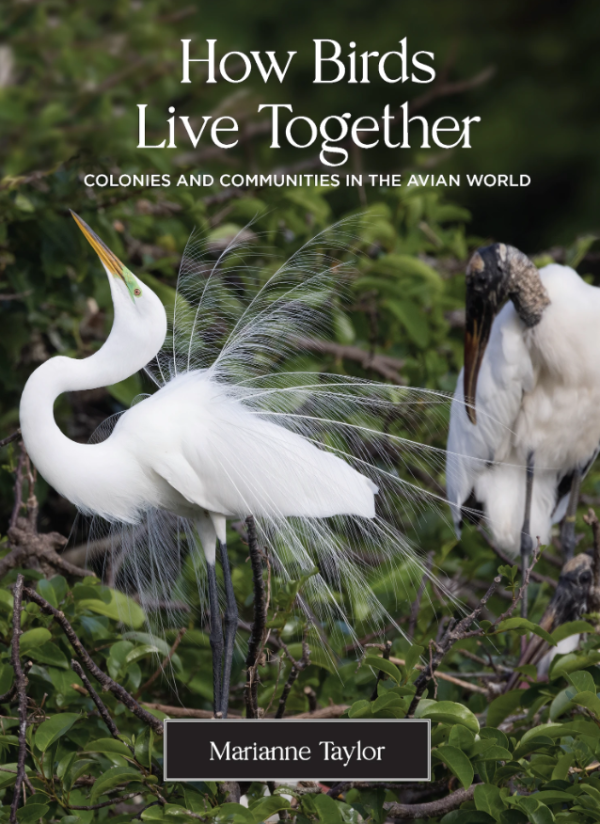
How Birds Live Together – Colonies and Communities in the Avian World.
|
Through fascinating text, dramatic color photos, maps, and other graphics, bird nesting colonies and communities are described in How Birds Live Together – Colonies and Communities in the Avian World. Providing a broad overview of social living among a variety of bird species and families, from long-established seabird nesting colonies that use the same cliffs for generations to the fast-shifting dynamics of flock formation, acclaimed wildlife writer Marianne Taylor explores the different ways birds choose to interact in numbers in this new publication by Princeton University Press.
Taylor examines the advantages of bird communities and social nesting behavior in chapters that provide detailed information about diverse types of bird nesting colonies, including species that construct single-family nests close together in trees; birds that share large communal nests used by multiple pairs; those that nest in tunnels and chambers dug into the earth; birds that form exposed colonies on open ground and defend them collectively, relying on ferocious aggression; species that nest communally in human-made structures in towns and cities, and more. Taylor discusses the challenges, benefits, hazards, and social dynamics of each style of living, and features a wealth of species as examples in this interesting volume.
Showcasing colonies from the Everglades to the edge of Scotland to the lakes of East Africa, How Birds Live Together gives birders a vivid understanding of avian social communities. For more information from Princeton University Press, see How Birds Live Together | Princeton University Press